Professional and writing career
From 1907 to 1919, he worked in the newspaper business in Harrisburg and Philadelphia. He served as Assistant Secretary of the Pennsylvania War History Commission, 1919-1921. In 1921, he moved to Evanston, Illinois and joined the N. W. Ayer & Son Advertising Agency, rising to be vice president in 1939 and later, president.

Philadelphia, known colloquially as Philly, is the largest city in the U.S. state and Commonwealth of Pennsylvania, and the sixth-most populous U.S. city, with a 2018 census-estimated population of 1,584,138. Since 1854, the city has been coterminous with Philadelphia County, the most populous county in Pennsylvania and the urban core of the eighth-largest U.S. metropolitan statistical area, with over 6 million residents as of 2017. Philadelphia is also the economic and cultural anchor of the greater Delaware Valley, located along the lower Delaware and Schuylkill Rivers, within the Northeast megalopolis. The Delaware Valley's population of 7.2 million ranks it as the eighth-largest combined statistical area in the United States.

Evanston is a city in Cook County, Illinois, United States, 12 miles (19 km) north of downtown Chicago, bordered by Chicago to the south, Skokie to the west, and Wilmette to the north. It had a population of 74,486 as of 2010. It is one of the North Shore communities that adjoin Lake Michigan and is the home of Northwestern University. The boundaries of the city of Evanston are coterminous with those of the former Evanston Township, which was dissolved in 2014 by voters with its functions being absorbed by the city of Evanston.
N. W. Ayer & Son was a Philadelphia advertising agency founded in in 1869. It called itself the oldest advertising agency in the United States. Named after Francis Ayer's father N. W. Ayer, it ventured into advertising in 1884. It created a number of memorable slogans for firms such as De Beers, AT&T and the U.S. Army. The company started to decline in the 1960s and, after a series of mergers, was closed in 2002 with its assets sold to the Publicis Groupe.
Although his first book was on military history, his work with the Pennsylvania War Commission from 1919 sparked his initial interest in naval affairs. He wrote several biographies of American naval captains, including John Barry (1745-1803), Nicholas Biddle (naval officer), Lambert Wickes, and John Young (naval officer) during the American Revolution, which were published by prominent academic presses, such as the Yale University Press and Louisiana State University Press. In the process of this research and writing, Clark developed a deep knowledge of the archival resources for this general period in naval history and made numerous careful transcripts of documents. As a result of this in the late 1950s, Clark's work came to the attention of the Director of Naval History, Rear Admiral Ernest M. Eller at the Naval History Division of the Navy Department (now the Naval Historical Center) and the head of the Early History Branch in that office, Dr. William J. Morgan. With the advice of the Secretary of the Navy's advisory sub-committee on naval history, Clark was appointed the first editor of the U.S. Navy's multi-volume documentary series on Naval Documents of the American Revolution, assisted by Morgan and his staff in the Early History Branch. Clark died while the fourth volume was in the course of publication, but left rough drafts for the first ten volumes. He was succeeded as editor and his work continued by Dr. William J. Morgan, who in turn was succeeded by Dr. William S. Dudley, and then by Dr. Michael J. Crawford.

Nicholas Biddle was one of the first five captains of the Continental Navy, which was raised by the Continental Congress during the American Revolutionary War. Biddle was born in Philadelphia in 1750. He began sailing at the age of 13 and joined the Royal Navy when he was 20. In 1773, he sailed the Arctic with Constantine Phipps and Horatio Nelson. When the Revolutionary War began in 1775, Biddle joined the Continental Navy and commanded several ships. In 1778 off the coast of Barbados, Biddle confronted HMS Yarmouth, a 64-gun British warship. After a twenty-minute battle, Biddle's ship Randolph suddenly exploded, killing him and most of his men. Four ships of the U.S. Navy have been named in his honor.
Lambert Wickes was a Captain in the Continental Navy during the American Revolutionary War.
John Young was a captain in the Continental Navy during the American Revolutionary War, commander of the Saratoga which was lost at sea.
A Republican and a Presbyterian, Clark was also a member of the Naval Historical Foundation, the Historical Society of Pennsylvania, the Pennsylvania Genealogical Society, and served as vice president of the Illinois chapter of the Sons of the American Revolution. Clark's personal small 170 document collection of original manuscript material, the bulk relating to the 1770-1794 period, with some documents as late as 1950, is in the Manuscript Division at the Library of Congress.
The Naval Historical Foundation, a nonprofit organization founded in 1926, has a broad mission to preserve and promote the naval history of the United States by supporting official Sea Services programs and institutions, meeting the needs of the public for naval history, and collecting historical items. The Foundation is located at the Washington Navy Yard, in Washington, D.C.

The Historical Society of Pennsylvania is a historical society founded in 1824 and based in Philadelphia. The Society's building, designed by Addison Hutton and listed on Philadelphia's Register of Historical Places, houses some 600,000 printed items and over 19 million manuscript and graphic items. The Society maintains printed collections on Pennsylvania and regional history and manuscript collections covering 17th-, 18th- and 19th-century history. The holdings of the Balch Institute for Ethnic Studies were added in 2002 and those of the Genealogical Society of Pennsylvania in 2006. The Historical Society has recently undertaken efforts to appeal to a younger demographic, including having open bar events.
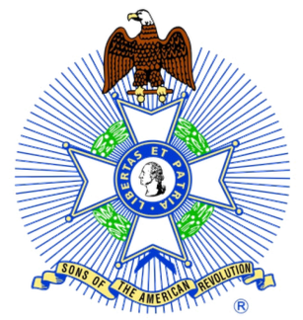
The National Society of the Sons of the American Revolution is an American congressionally chartered organization, founded in 1889 and headquartered in Louisville, Kentucky. A non-profit corporation, it has described its purpose as maintaining and extending "the institutions of American freedom, an appreciation for true patriotism, a respect for our national symbols, the value of American citizenship, [and] the unifying force of 'e pluribus unum' that has created, from the people of many nations, one nation and one people."
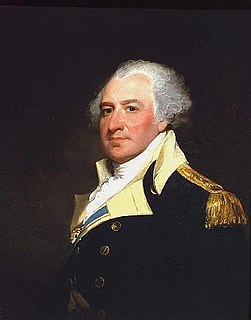
Thomas Mifflin was an American merchant and politician from Philadelphia, Pennsylvania. He served in a variety of roles during and after the American Revolution, several of which qualify him to be counted among the Founding Fathers. He was the first Governor of Pennsylvania, serving from 1790 to 1799.

Nicholas Biddle was an American financier who served as the third and last president of the Second Bank of the United States. He also served in the Pennsylvania General Assembly. He is best known for his role in the Bank War.
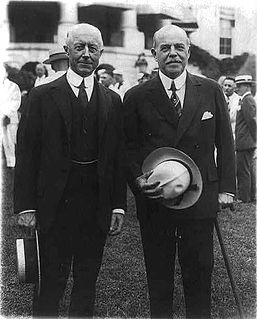
Charles Francis "Deacon" Adams III was an American politician. He was a member of the prominent American Adams family, was the United States Secretary of the Navy under President Herbert Hoover and a well-known yachtsman.

The Naval History and Heritage Command, formerly the Naval Historical Center, is an Echelon II command responsible for the preservation, analysis, and dissemination of U.S. naval history and heritage located at the historic Washington Navy Yard. The NHHC is composed of 42 facilities in 13 geographic locations including the Navy Department Library, 10 museums and 1 heritage center, USS Constitution repair facility and detachment, and historic ship ex-USS Nautilus.
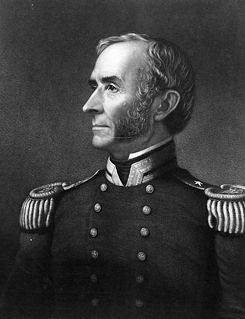
Commodore David Conner was an officer of the United States Navy, whose service included the War of 1812 and the Mexican–American War. During the 1840s, he served on the Board of Navy Commissioners and as the first Chief of the Bureau of Construction, Equipment, and Repair.
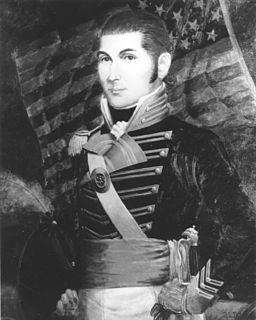
Presley O'Bannon was a first lieutenant in the United States Marine Corps, famous for his exploits in the First Barbary War (1801-1805). In recognition of his bravery, he was presented a sword for his part in attempting to restore Prince Hamet Karamanli to his throne as the Bey of Tripoli. This sword became the model for the Mameluke Sword, adopted in 1825 for Marine Corps officers, which is part of the formal uniform today.

Andrew Doria was a brig purchased by the Continental Congress in November 1775. She is most famous for her participation in the Battle of Nassau—the first amphibious engagement by the Continental Navy and the Continental Marines—and for being the first United States vessel to receive a salute from a foreign power.
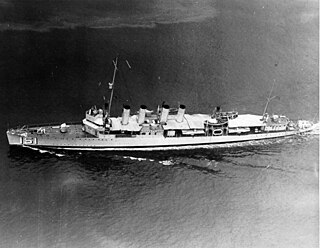
USS Biddle (DD–151) was a Wickes-class destroyer in the United States Navy during World War II, later reclassified AG-114. She was the second ship named for Captain Nicholas Biddle.
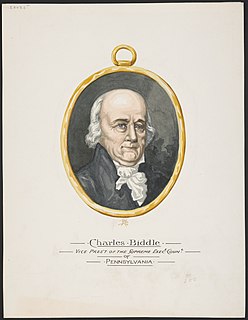
Charles Biddle was a Pennsylvania statesman and a member of the prominent Biddle family of Philadelphia, Pennsylvania.
William James Morgan was Senior Historian at the U.S. Naval Historical Center and editor of Naval Documents of the American Revolution.
William Sheldon Dudley is a naval historian of the United States Navy, who served as Director of Naval History and Director, Naval Historical Center, Washington, D.C. from 1995 to 2004.
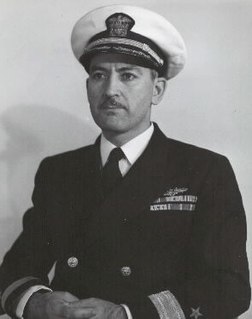
Ernest McNeill Eller was a Rear Admiral in the United States Navy, who served as Director of Naval History, Naval History Division, Office of the Chief of Naval Operations from 1956 to 1970.
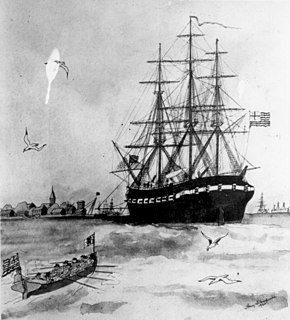
The Battle of Block Island was a naval skirmish which took place in the waters off Rhode Island during the American Revolutionary War. The Continental Navy under the command of Commodore Esek Hopkins was returning from a successful raid on Nassau when it encountered HMS Glasgow, a Royal Navy dispatch boat.

John Barry was an officer in the Continental Navy during the American Revolutionary War and later in the United States Navy. He came to be widely credited as "The Father of the American Navy" and was appointed a captain in the Continental Navy on December 7, 1775. He was the first captain placed in command of a U.S. warship commissioned for service under the Continental flag.
HMS Galatea was a 20-gun Sphinx-class sixth-rate post-ship of the Royal Navy. She served during the American War of Independence.

The Battle of Turtle Gut Inlet was an important, early naval victory for the Continental Navy and the future "Father of the American Navy", Captain John Barry.
It was the first privateer battle of the American Revolutionary War.
The battle resulted in the first American casualty of the war in New Jersey, Lieutenant Richard Wickes, brother of Captain Lambert Wickes.
It was the only Revolutionary War battle fought in Cape May County.

Richard Wickes was an officer in the Continental Navy during the American Revolutionary War. He served as the third lieutenant on the Reprisal, captained by his brother Lambert Wickes. During the Battle of Turtle Gut Inlet, he was the first American casualty of the war in New Jersey.

HMS Kingfisher was the second ship in the 14-gun Swan class of ship sloops, to which design 25 vessels were built in the 1760s and 1770s. She was launched on 13 July 1770 at Chatham Dockyard, and completed there on 21 November 1770. She took part in the American Revolutionary War, enforcing the blockade of the Delaware Bay, and served in the Battle of Turtle Gut Inlet, near Cape May, New Jersey. While under the temporary command of Lieutenant Hugh Christian, she was burnt by her own crew to avoid capture on 7 August 1778 in Narragansett Bay during the Battle of Rhode Island.
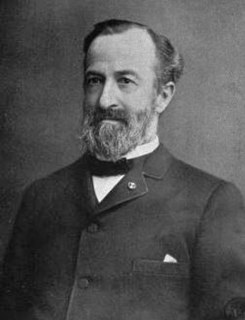
William Henry Egle was a physician, author and historian who served as the State Librarian of the Commonwealth of Pennsylvania from 1887 to 1889. A practicing physician at the dawn of the American Civil War, he was initially commissioned as an assistant surgeon, and then served as a surgeon with several different Union Army regiments during the course of the conflict, including the 116th Regiment Infantry, U.S. Colored Troops (USCT).























